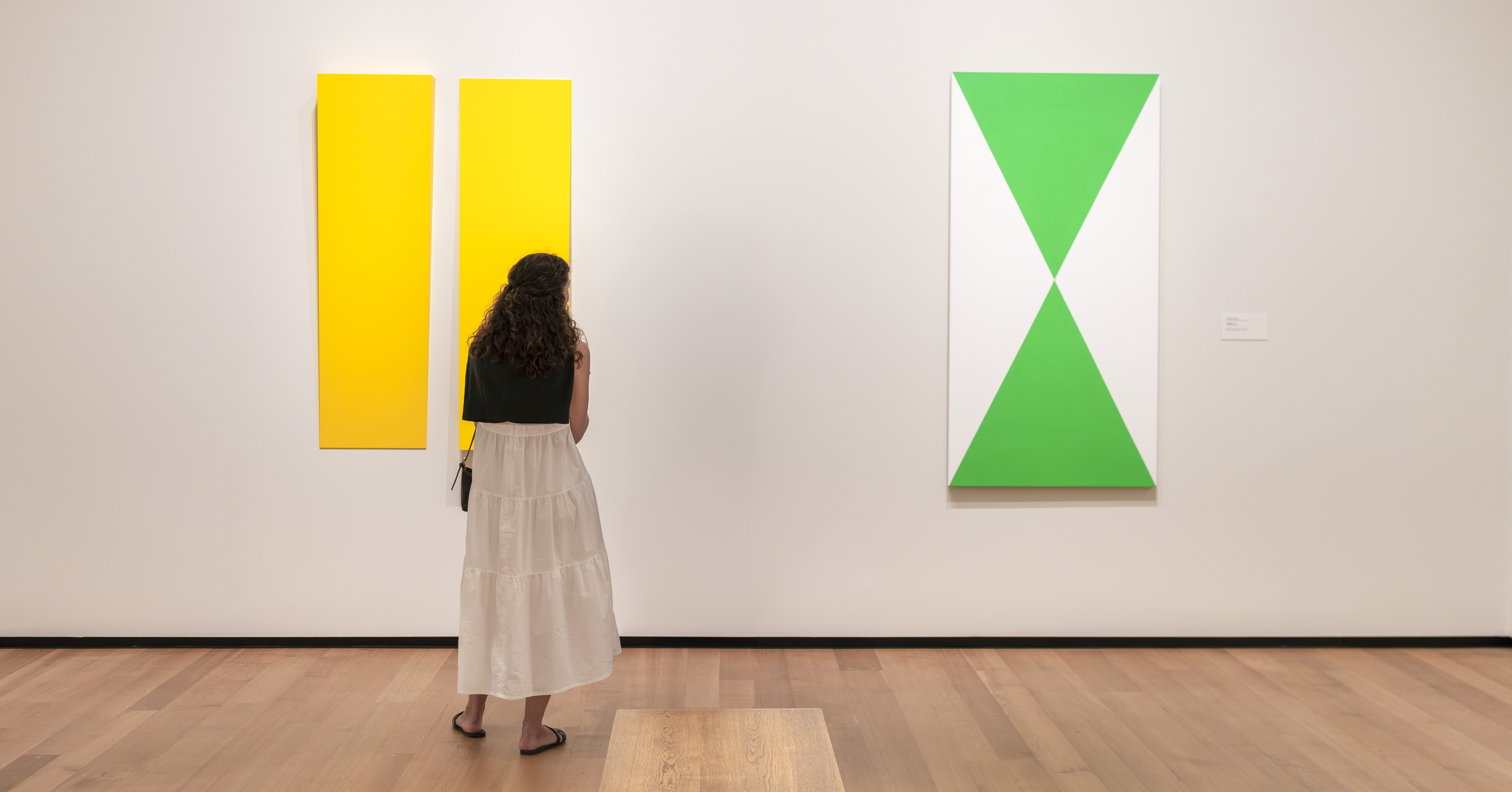Use our guide to explore works by Latinx artists on view in our galleries.
Discover how they’ve addressed histories, represented communities, and honored traditions through their works.
Take this guide with you through the galleries. You will need a map. Pick one up at any information desk or use our app.
Estimated time for the tour: 45 minutes
East Building
Carmen Herrera, Untitled Estructura (Yellow)

Carmen Herrera conceived her series of Estructuras (Structures) in the 1960s. Untitled Estructura (Yellow) features two triangular wedges that hang side by side. The wedges are reverses of each other: one narrows at the bottom and the other at the top. The slice of wall between them becomes part of the work. Herrera’s art often makes us question where the painting begins and ends.
Herrera studied art and architecture in Havana, Cuba, before moving to New York City in 1939. Living there and in Paris, Herrera developed a distinct style of crisp and vividly colorful paintings. But the artist was nearly 90 years old before art world recognized her vision, which included bringing her paintings into three dimensions.
Upper Level, Gallery 406-A
Freddy Rodríguez, Casabe y Cruz II

This painting references the history of the Dominican Republic, where artist Freddy Rodríguez was born. Embellished with a cross, the circular canvas evokes communion bread—typically a flat white wafer. In the Catholic ritual of the Eucharist, the bread stands in for the body of Jesus Christ. But the painting also resembles casabe, a bread derived from yuca roots of the cassava plant. The bread is popular across the Caribbean and Latin America as well as their diasporas.
Rodríguez merges these two foods, alluding to the Christian colonization of the island of Hispaniola. Using the color white, the artist also references the colonizers’ desire to purify Indigenous and African religions and traditions.
Upper Level, Gallery 406
Dino Aranda, Three Figures (Tres Figuras)

In Three Figures (Tres Figuras), Dino Aranda depicts three abstracted human bodies in coffin- or cage-like forms. The painting is part of a haunting series he made in response to the murder of students during the Somoza dictatorship. The Somoza family ruled the artist’s native Nicaragua from 1936 to 1979.
Aranda played a key role in establishing Managua, Nicaragua’s capital, as a center of Latin American art in the 1960s. In 1965, he moved to Washington, DC, to study at the Corcoran School of Art. There, Aranda cofounded Fondo del Sol Visual Arts Center. The gallery presented the work of Latin American and Latinx artists, organizing traveling exhibitions across the United States and Mexico.
Upper Level, Gallery 407
Sculpture Garden
Alfredo Halegua, America

Alfredo Halegua initially didn’t name this 25-foot sculpture. Nearly two decades after its creation, he added the title America, which is inspired by the form of the work. Halegua said that the bend near its base reminded him of something that grew with great difficulty at first, but resulted in “something positive”—like the United States.
The Washington, DC–based sculptor, born in Uruguay, creates large-scale abstract sculptures using materials like steel and metal. He focuses on geometric abstraction and on the two-dimensionality of lines and forms. The artist has experimented for decades with clean lines, sharp angles, and negative space. Halegua’s public artworks are on view across the United States.
